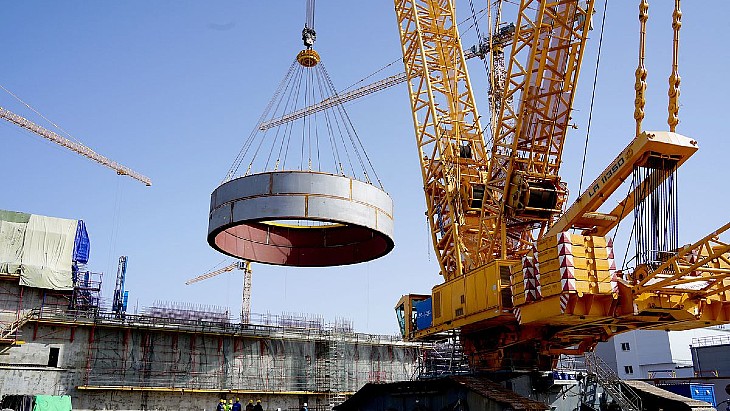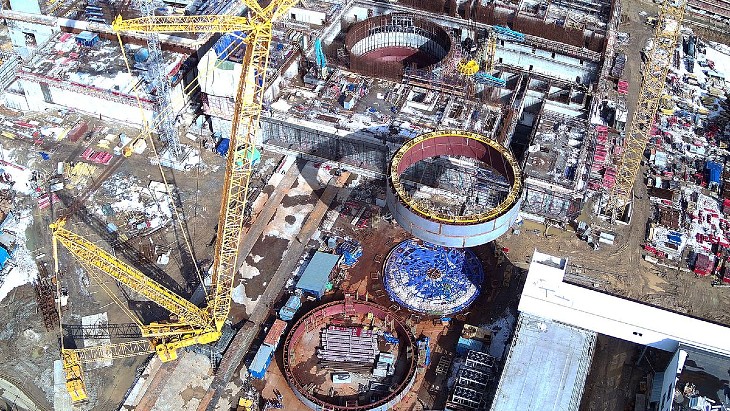The steel reactor base plate and lower tier of the containment were installed at the turn of the year, the third enlarged unit is planned to be installed in the reactor shaft in December 2024. The final height of the structure will be 17 metres.
According to Rosatom: "The containment structure is the outer part of the reactor vessel. It provides retention of heat-insulating concrete, forming an additional localising barrier of protection, which surrounds the boundary of the coolant circuit. On its surface, the temperature should not exceed 60 degrees Celsius, and the radiation background is actually equal to the natural background."
The BREST-OD-300 fast reactor is part of Rosatom's Proryv, or Breakthrough, project to enable a closed nuclear fuel cycle. The 300 MWe unit will be the main facility of the Pilot Demonstration Energy Complex at the Siberian Chemical Combine site. The complex will demonstrate an on-site closed nuclear fuel cycle with a facility for the fabrication/re-fabrication of mixed uranium-plutonium nitride nuclear fuel, as well as a used fuel reprocessing facility.
 (Image: SCC)
(Image: SCC)
Last week, Russian nuclear regulator Rostechnadzor issued a licence which will allow the production of mock-ups of fuel assemblies with depleted uranium for the BREST-OD-300 reactor. The fuel fabrication/refabrication unit is the first of the PDEC facilities to be commissioned, with all the works scheduled to be completed by the end of 2024. TVEL said that "at the next stage, after obtaining the appropriate permission from Rostechnadzor to handle plutonium" the equipment will be used to directly produce fuel developed for the reactor - a mixed dense nitride uranium-plutonium fuel (MNUP) based on depleted uranium - a by-product of uranium enrichment for nuclear reactors - and plutonium extracted from irradiated nuclear fuel.
The target for the BREST-OD-300 reactor is to start operation in 2026.
According to the World Nuclear Association information paper on fast neutron reactors, "the BREST fast neutron reactor, of 700 MWt, 300 MWe has lead as the primary coolant, at 540°C, and supercritical steam generators. It is inherently safe and uses a mixed uranium and plutonium nitride fuel... no weapons-grade plutonium can be produced, since there is no uranium blanket - all the breeding occurs in the core ... fuel cycle is quoted at 5-6 years with partial refuelling at about 10 months. The initial cores can comprise plutonium and used fuel - hence loaded with fission products, and radiologically 'hot'. Subsequently, any surplus plutonium, which is not in pure form, can be used as the cores of new reactors. Used fuel can be recycled indefinitely, with onsite facilities. The nitride fuel has been successfully tested in the BN-600 reactor to a burn-up of 7.4%".
Initial operation of the demonstration unit will be focused on performance and after 10 years or so it will be commercially oriented. The plan has been that if it is successful as a 300 MWe unit, a 1200 MWe (2800 MWt) version will follow - the BR-1200.






_63865.jpg)
_18570.jpg)
_16159.jpg)





